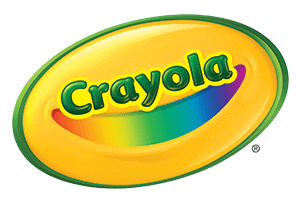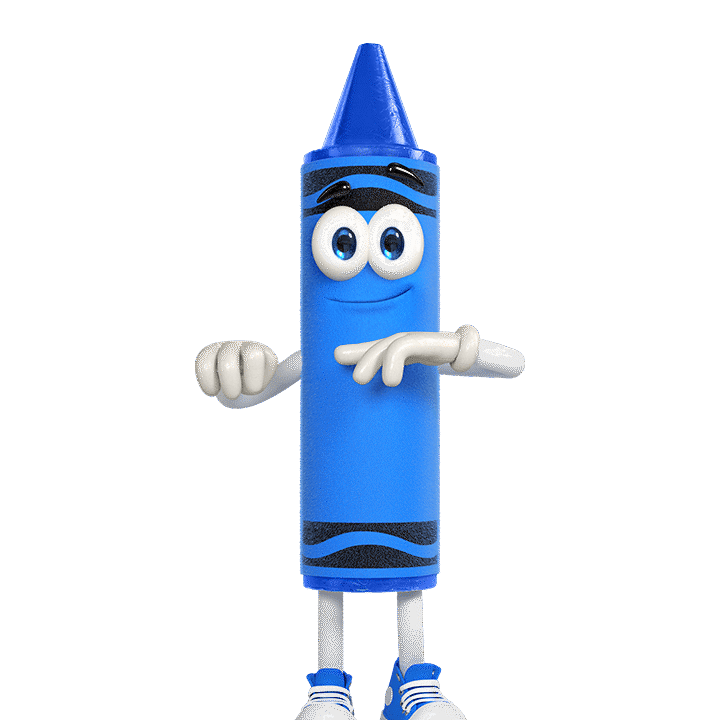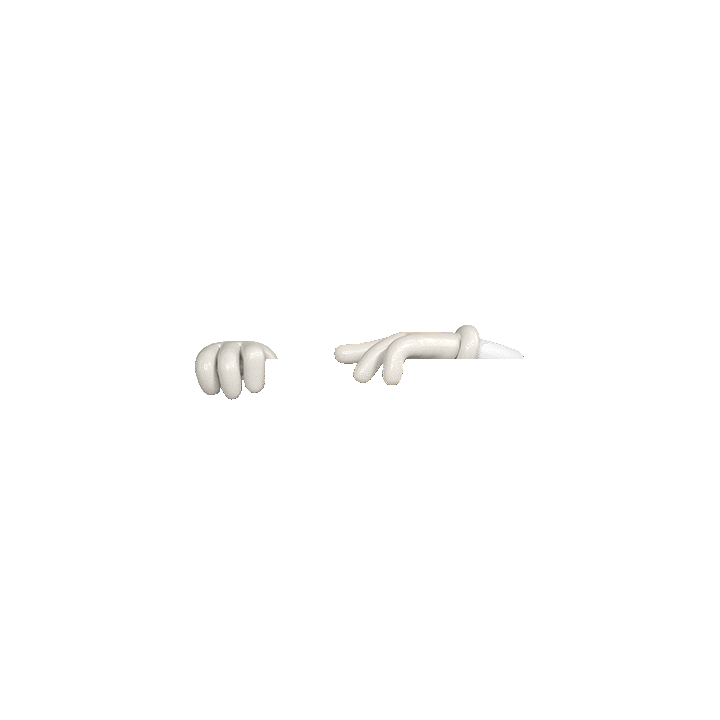Do you have any tips for decorating Air-Dry Clay?
Decorating sculptures made with Crayola® Air-Dry Clay is fun and easy!
- Paint: Thoroughly dry pieces may be painted with tempera, acrylic, or watercolour paint
- Markers: Non-Permanent & Washable Markers may not provide optimal coverage if you are colouring a large area of clay since the clay tends to clog the marker nib. Permanent pigment-based markers work well for writing words on the clay.
- Glitter Glue can be used to decorate dry artwork.
Other product suggestions: pigment-based stamping pads and metallic powder pigment embellishments.
If you have additional questions, we would love to hear from you! Feel free to call or text us at 1−800−272−9652 on weekdays between 9 AM and 4 PM Eastern Time.
Popular Questions
Throughout Crayola’s history, several crayon colours have been retired, marking significant moments in the evolution of our vibrant palette.
1990
For the first time in Crayola history eight colours were retired and placed in the Crayola Hall of Fame: blue gray, green blue, lemon yellow, maize, orange red, orange yellow, raw umber, and violet blue.
Eight new colours were added: cerulean, dandelion, fuchsia, jungle green, royal purple, teal blue, vivid tangerine, and wild strawberry.
2003
Celebrating a century of bringing colour to the world, Crayola introduced four new colours named by Crayola fans! To make room for the new hues, we bid farewell to blizzard blue, magic mint, mulberry, and teal blue.
The four new colours that were introduced are: inchworm, jazzberry jam, mango tango, and wild blue yonder.
Kudos to our hue heroes – the consumers who voted in the “Save the Shade” campaign, ensuring burnt sienna stayed in the pack.
2017
To mark National Crayon Day on March 31st, we announced Dandelion was leaving the pack. To honor this iconic colour, we sent Dandelion on a retirement tour to his favorite places. His replacement, Bluetiful, was announced on May 5, 2017.
The basic ingredients contained in Crayola Crayons are paraffin wax and colour pigment. The ingredients are the same for all Crayola Crayon colours, with some modifications in special effects crayons. We manufacture almost 3 billion crayons each year. The paraffin wax is melted and mixed together with pre-measured amounts of colour pigments. We purchase the powder pigments and either use individual colours or mix the pigments to produce the many colours of Crayola Crayons. The hot wax mixture is poured into moulding machines. In about four to seven minutes, the crayons cool and become solid. The crayon manufacturing process can be viewed on our web site by visiting http://www.crayola.com/factory/preview/factory_floor/crayon_mfg.htm. There is a book available titled “Crayons From Start To Finish”. The book offers a behind-the-scenes look at the whole manufacturing process. To obtain this book, please visit your local library. As a further reference, the ISBN is 1−56711−390−7 and the author of the book is Samuel G. Woods.
Crayola Canada’s community relations program supports non-profit organizations located across Canada, with an emphasis on the arts and education.
How To Apply
Requests for donations must be submitted on your organization’s letterhead with your contact information by email, or mail. If sending your request by email, you will receive an automatic reply acknowledging that your email has been received. If you do not receive this confirmation within 5 business days, please call Amanda Pascoe at Crayola Canada.
Email:apascoe@crayola.com
Phone Number: 1−705−212−4399
Mailing Address:
Crayola Canada
Donations Department
P.O. Box 120
15 Mary St. West
Lindsay, Ontario
K9V 4R8
Attn: Amanda Pascoe
What To Include
We ask that you include the following required information in your letter:
- Date of your event
- If you require confirmation earlier than one month prior to your event, please provide us with a time frame needed to receive a response.
- Details of your event
- Shipping Address
- Telephone number, if we need to contact you
- Contact person’s name, phone, and email address
- What you would like to receive – i.e., door prize, art supplies for craft area, etc.
Please be advised that it may take up to three weeks for your request to be reviewed. Only organizations selected to receive a donation will be contacted.
Because Crayola Marker components are securely sealed during the manufacturing process, we don’t recommend trying to remove the marker nib and reservoir to recycle the barrel. The marker caps can be recycled at facilities that accept #5 plastic.
Green is more than just a colour to us! Click here to learn more about Crayola’s sustainability initiatives.
THE CRAYOLA COLOURED PENCIL STORY
In 1988, Crayola introduced coloured pencils in their product line to fulfill consumer requests. Today, Crayola markets a variety of colour selections in packages of 8, 12, 24, 36, 50 and our largest selection, the 64 count package. Crayola Coloured Pencils are manufactured in Brazil and Costa Rica due to their high-volume manufacturing capabilities.
Crayola Coloured Pencils are made from reforested wood. Reforested wood is wood taken from special tree farms grown specifically for gathering wood and are not part of the tropical rain forest. No tropical rain forest wood is used in making Crayola Coloured Pencils.
The process of making Crayola Coloured Pencils begins in the forest. Seedlings, which are young trees, are planted in fields much like a farmer plants a crop. Seedling crops grow into trees which are eventually used to make wood casings for the pencils. After a number of years, the trees are harvested, cut into even lengths, stacked onto trucks and shipped to the sawmill. Then, a new crop of seedlings is planted to replace those which have been harvested.
At the sawmill, lumber arriving by the truckload, is stacked in large piles and allowed to dry. Once dry, the lumber is fed into a bark stripping machine which removes all of the bark from each piece of lumber. Next, the lumber goes through a series of milling machines which cuts the lumber into rectangular slats. These slats are about as long as a coloured pencil and about three inches wide. The slats are the building blocks for the production of coloured pencils.
The slats are then transported to the pencil making plant. Here they are fed into another milling machine which cuts small semicircular grooves at regular intervals down the length of each slat. These grooved slats are now ready to accept a coloured pencil lead.
In this case, lead is used as a generic term to describe the coloured core of the pencils. Crayola Coloured Pencils have been certified nontoxic by the Art and Creative Material Institute (ACMI) and bear the Approved Product (AP) seal. This seal assures consumers the product meets specific quality standards and contains no known toxic substances in sufficient quantities to be injurious to the human body, even if ingested.
To make a coloured pencil lead, you need four raw materials: extenders which make up the body of the lead, a binder to hold the ingredients together, pigment which gives each type of coloured pencil its unique colour and water to help uniformly mix all the ingredients. First, the extenders, binders, pigments and water are placed in a large mixer which gently kneads them together into a uniform doughy substance. When the mixing is complete, the contents of the mixer are rolled into flat sheets. Finally, these sheets are machine-pressed into large, long solid cylinder shapes. These shapes are called cartridges.
Each cartridge, while still damp and pliable, is inserted into another machine called an extrusion press, where it is forced through a small tube. The tube has a diameter equal to that of a coloured pencil lead. As the long rope of wet coloured lead comes out, an automatic slicer cuts it into equal lengths approximately as long as a coloured pencil. Since the leads are still quite moist, they must be dried in large ovens before they become hard enough to insert into the slats.
To assemble the pencils, half of the grooved slats are fed into a machine which carefully lays a coloured pencil lead into each groove. Then a layer of glue is applied and a second grooved slat is placed on top of the slat holding the lead. Think of this as a pencil sandwich, with each slat acting like a piece of bread and the coloured leads acting like the filling.
These pencil sandwiches are then bound very tightly together and placed into storage to give the glue time to dry. Once the glue is dry, they are fed into another milling machine which cuts them into individual coloured pencils. Depending on the design of coloured pencils, they are cut into either round or hexagonal shapes.
Next, the pencils are fed into a machine to be painted. Paint drips down onto an o‑ring, which acts like a small paint brush to coat the pencils with the same colour paint as the coloured lead it contains. The pencils run down a conveyer belt to allow the paint to dry. The painted pencils are then sent to a machine to be automatically sharpened. Finally, brightly coloured finished pencils are packed into boxes which are shipped to neighborhood stores.
Crayola Coloured Pencils are used by people of all ages for everything from crafts to professional artwork and school projects. Crayola continues to offer assortments which meet our consumers artistic needs.
Get the best results with these tips for cleaning your Scribble Scrubbies Pets.
Scrub Under Running Water:
- Gently scrub your pet under running water after play. Use the scrub brush to help release the marker inks from the tiny fibers (flocking). Do not wash your Scribble Scrubbie Pets in the dishwasher or bathtub.
Allow to Dry:
- Allow your pets to dry before a second use. Colouring on damp pets can cause the ink to wick under the fibers, making the colour harder to rinse away. Let your pet air dry before storing it.
Soaking for Stubborn Stains:
- If colours persist after scrubbing under running water or have been on your pet for several days, consider soaking it in water for 20 minutes. For stubborn stains, an overnight soak may be necessary.
Additional Tips:
- Fresh colouring is easier to clean. Soap has little effect on cleaning your pets. Fresh colouring typically requires a rinse under the faucet, while concentrated colouring may require light scrubbing under a faucet or an overnight soak.
Explore Our Collection:
- Check out our entire collection of Scribble Scrubbie Pet products at Crayola.com.
Need Further Assistance?
- We’re here for you! Call or text us at 1−800−272−9652 on weekdays between 9 AM and 4 PM Eastern Time.


